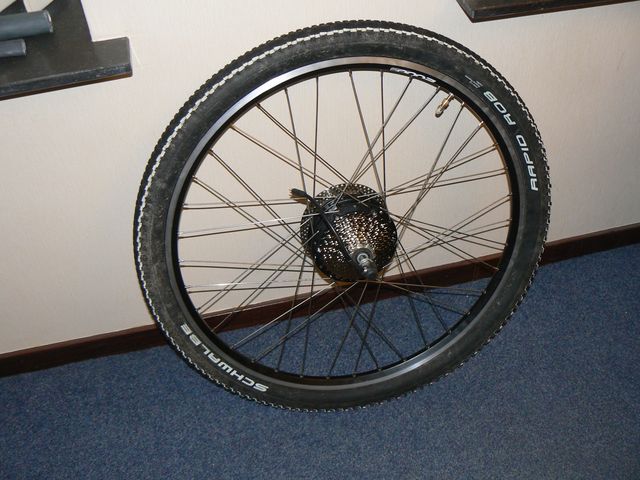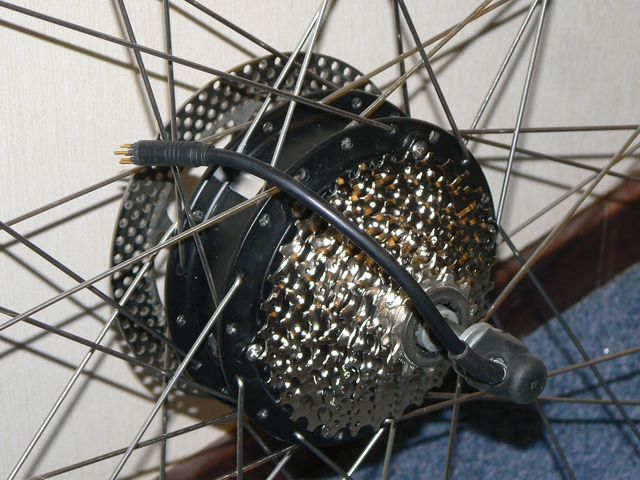Jeremy Harris
100 MW
-dg said:Two questions:
Where are you getting these Kt numbers for any of these motors? It seems very useful, but I have not seen it anywhere else.
You can derive Kt from Kv, as it's a fixed relationship. If you work out the effective Kv (the rpm per volt factor) for the motor, then Kt is derived from Kt = 60 / (2 x PI x Kv) (in N-m/A). For example, if you take the 328 rpm at 36V Q100 motor, then the effective Kv (including gearing) is 328 / 36 = 9.11 rpm/V and the effective Kt (including gearing) is 60 / (2 x 3.14159 x 9.11) = 1.048 N-m/A. This means that if you put 1 A through the motor windings, then you will get 1.048 N-m (about 0.773 lb-ft) of torque at the wheel.
-dg said:I'm very tempted to build a Swift. I'm a reasonably good cyclist, but an even better eater. Given my own weight (120kg), the hilly terrain around here and the fact that I may need to haul it up a couple flights of stairs in the train stations I expect to have to trade some speed for torque and some range for weight. I plan to pedal hard on climbs, the assist is more to keep average speeds up for commuting. I'd like to be able to sustain 32kph with about 100w of pedaling and I'd iike to be be able to climb 12% for up to 1/2 mile and 6% indefinately with about 200w of pedaling. I can deal with HK lipo but would prefer to keep it in the range 10-14s so that I can charge without taking the pack apart (Hyperion 1420). I've been all over the simulator and the BPM can do this. But, it is pretty heavy and I'd like avoid having so much weight in the ends of the bike .I think a rear drive might be better, but then there is the whole issue of getting enough gearing. The stock Swift setup seems pretty reasonable, but it is cassette and there are not many acceptable 11 tooth freewheels. I'm a little leary of the Q100 because of the bolt together axle setup. So what motor?
BPM rear?
SWXH rear?
SWXK front?
Comments please.
I reckon you probably need to sacrifice a bit on motor weight and go for the CST motor, fitted with a decent cassette. This will give you the ability to fit a wide gear range, wider than you can get with a freewheel. The additional weight of the motor would probably be offset by the better gearing you could get, as you're a keen pedaller. The only problem would be the one of carrying the bike up stairs, but perhaps you could shave weight off elsewhere to make this easier. Overall, the CST fitted with a cassette would be a little over 2kg heavier than a Q100 fitted with a freewheel, but would be able to deliver a higher torque for longer before overheating, which might be important as you have a lot of hills to climb.
The SWXH is sort of midway between the CST (which is really a BPM internally, I think) and the Q100. I'm pleased with mine on the other folding bike I have, as it's quiet and reliable, but then I only weigh 82kg and I don't often ride it on hills. I'm not sure how the gears in either the SWXH or Q100 would cope with the greater weight and a lot of hill climbing, but would guess that they might start to complain before too long.
The downside of the CST motor is the high price. They are charging a lot extra over the price of the BPM just for fitting the cassette splines.





